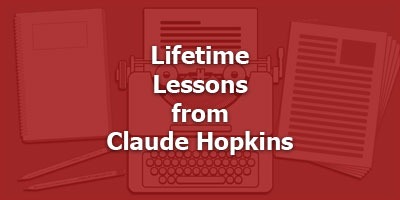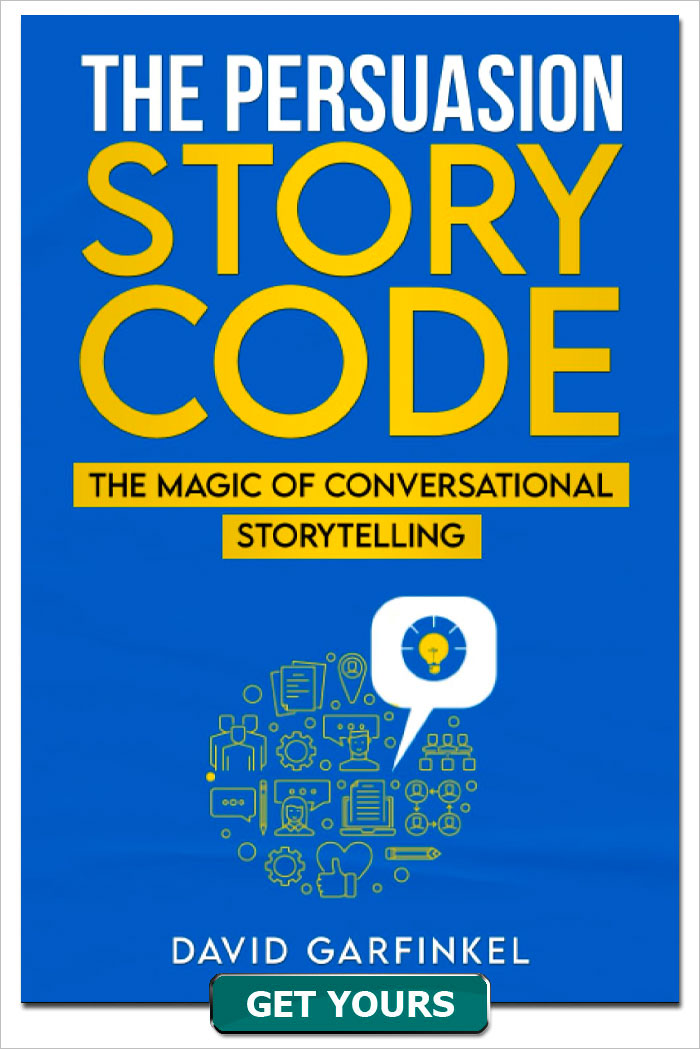Lifetime Lessons from Claude Hopkins
Published by: David Garfinkel on 07-06-2020
Tweet
We’re back with another show in our Old Masters series. A return visit for the ideas of Claude Hopkins, but completely different material since last time, when we pulled out some key points from his book Scientific Advertising.
As I said before, and it’s worth repeating,
When I first started learning how to write copy, everybody told me “read Scientific Advertising.” It’s a book written in the first part of the 20th century, over 100 years ago, by Claude Hopkins, who many consider the father of direct-response copywriting.
I did read the book. I read it again. In fact, I read it 15 times.
But for today’s show, on the advice of my friend and previous Copywriters Podcast guest Don Hauptman, I looked into an excellent book from long ago called “Masters of Advertising Copy.”
The book has 25 chapters, and each is written by a different copywriter. I knew we had to start with the one by Claude Hopkins. His chapter is humbly titled, “Some Lessons I Have Learned In Advertising.” But to give you an idea of how eternal every single one of Claude Hopkins’s lesson is, I couldn’t find one that is not in active use today.
Five lifetime lessons from Claude Hopkins
1. Demonstration and samples
Sampling and demonstration, which are different forms of the same thing, make up the best way to sell anything.
Features by themselves usually don’t sell. Features + benefits work some of the time. But demonstration, where the customer gets to sample the product personally, usually works best of all — because people know from direct experience what they’re getting and what the benefits will be.
2. Free gift and curiosity
You can get people interested by offering a free gift, and you’ll do even better if the gift is a mystery until they get it.
People always like to feel they’re getting “the better end of the deal.” This is a proven way to operationalize that desire on the part of prospects into a way to get more sales.
3. Power of drama with a boring product
Drama will help you sell a lot more products, and if you dramatize a boring product, you can sell it when you couldn’t sell it before.
This is similar to the idea in Jeff Walker-style launches. The drama adds to interest in the product in a way that’s hard to match with anything else, when you do it right. It’s hard to get this right, but when you do, you’ve got a gold mine on your hands.
It’s hard to get it right because it’s like marketing entertainment. Publishing a best-selling book, or releasing a hit song or a movie, is usually much chancier and harder to do than simply making a lot of money with a good product.
4. Test everything
Test small before you scale up.
Early on in his career, many companies came to Hopkins with product ideas they were certain would be winners. Hopkins says he made “several great mistakes by relying on my judgment and on theirs.”
5. Seeking out the details that convince
Your USP can be buried in trivia (or so it seems to many business owners and execs). But that “trivia” can be a detail the decides the prospect to buy from you, and become a customer.
Gene Schwartz even developed a category of copy to label this kind of description: Mechanism. The key is not just using a mechanism in your copy, but using it convincingly to make a customer see why you are the preferable choice in the marketplace.
Resource:
Masters of Advertising Copy, Edited by J. George Frederick:
https://www.amazon.com/Masters-Advertising-Marketing-Routledge-Editions-ebook/dp/B086H4L4K8
Keywords: old masters of copywriting









